The 2008 financial and economic crisis sparked significant protests across the globe. From the “indignados” movement in Spain to civil unrest in Greece to mass mobilization in Iceland, protests came to the fore. The severity of economic collapse, especially across European countries, created shared and emotionally charged opportunities for protest mobilization, bringing citizens onto the streets and encouraging different—old and new—modes of protest. As recent articles reported (Kern, Marien, and Hooghe 2015; Quaranta Reference Quaranta2015), economic performance during the Great Recession was associated with rising levels of noninstitutionalized political participation. For instance, Genovese, Schneider, and Wassmann (Reference Genovese, Schneider and Wassmann2016) documented a significant upward shift in the number of strikes from 2008 to 2013. Similarly, data collected by Banks and Wilson (Reference Banks and Wilson2016) showed that street protests, including violent riots and antigovernment demonstrations, increased between 2010 and 2012—a period during which the number of protest incidents per year was already higher than in the entire 1960s (Funke, Schularick, and Trebesch 2016).
The upward shift in the number of protests represents a good opportunity to (re)test a long-standing pattern identified in the literature: the socioeconomic protest gap. Seminal works, and much of the subsequent literature, found that socioeconomic characteristics have a considerable effect on explaining who participates in political protests. Briefly, the resource-based theory argues that some individuals do not have the resources (e.g., time, money, or capacity to acquire complex knowledge) to become engaged in protest mobilization. In particular, this approach shows that sociostructural conditions—including being less educated; having lower income; and being younger, rightist, or a woman—are correlated with a lower probability to engage in noninstitutionalized political participation.
Despite this conventional claim, less is known about the persistence of this gap during bad economic times. In fact, the increase in the number of protests in recent years may have been caused by three nonexclusive observational events. First, the Great Recession may have mobilized everyone equally. If this were the case—and despite protesting more than before—low-resources individuals would still have had a lower probability to engage in protests; consequently, the initial gap would not have disappeared. Second, the economic crisis may have increased protest behavior among economically advantaged groups while depressing it (or keeping it constant) among disadvantaged groups. If this were the case, the protest gap would have become wider. Third, the Great Recession may have increased mobilization patterns among the disadvantaged, thereby closing (or reducing) the protest gap across groups.
This article focuses on the third aspect and addresses the extent to which (recent) bad economic times increased the likelihood of engaging in protest behavior among low-resources individuals.
This article focuses on the third aspect and addresses the extent to which (recent) bad economic times increased the likelihood of engaging in protest behavior among low-resources individuals. In other words, did the Great Recession open a window of opportunity for individuals with a priori lower resources to protest? Or did the recent economic crisis further deprive an individual’s means, further lowering the likelihood to protest among low-resources individuals? Overall, is the resources-driven approach still relevant to understand protest behavior after the economic crisis?
We present empirical evidence based on cumulative data from the European Social Survey (ESS 2006–2014) and from Eurostat. To further distinguish the dynamics of protesting, we differentiate between low-cost (i.e., engaging in boycotts or signing a petition) and high-cost (i.e., taking part in a demonstration) modes of protesting. Our findings show that bad economic situations enhance the likelihood of individuals participating in both low-cost and high-cost protests. However, whereas the protest gap increases when considering high-cost protesting, it diminishes or remains stable concerning low-cost protesting.
THEORETICAL ARGUMENTS: THE GREAT RECESSION AND THE ROLE OF RESOURCES
The resources-driven approach to protesting is popular in political science and sociology. The tenet of this model is that individuals need resources to engage in political participation—the implication being that citizens who have time, money, and civic skills are more likely to protest than others (Brady, Verba, and Schlozman Reference Brady, Verba and Schlozman1995). Scholars studying political participation have documented that the heterogeneous distribution of resources has led to socioeconomic and ideological biases in the likelihood of protesting, in what is commonly known as the “protest gap.” Among these biases, research has shown consistently that noneducated citizens and people with lower levels of income are less likely to participate in both institutionalized and noninstitutionalized politics (Gallego Reference Gallego2010; Rosenstone and Hansen Reference Rosenstone and Hansen1993; Teorell, Sum, and Tobiasen Reference Teorell, Sum and Tobiasen2007; Verba, Schlozman, and Brady Reference Verba, Schlozman and Brady1995). Similarly, gender also has been regarded as a significant factor in explaining political engagement, with men slightly but consistently more likely to take part in protest behavior (Burns Reference Burns2007; Coffé and Bolzendahl Reference Coffé and Bolzendahl2010; Hooghe and Stolle Reference Hooghe and Stolle2004). Similarly, the ideological continuum also indicates a protest gap, with leftist individuals engaging to a larger extent in political participation than centrist and particularly rightist individuals (Barnes and Kaase Reference Barnes and Kaase1979; Dalton Reference Dalton2008; Rucht Reference Rucht2003; Van der Meer, Van Deth, and Scheepers Reference Van der Meer, Van Deth and Scheepers2009). Footnote 1
Overall, whereas some groups possess sufficient means to engage in protest events, others do not due to their low level of resources—that is, according to the resources-driven approach, they might not have any other alternative than to focus on their own situation.
The Effect of the Economic Crisis on the Protest Gap
Despite the protest gap being consistently reported by the specialized literature, less is known about how (and whether) the state of the economy affects it. Do economic crises modify the propensity of different socioeconomic and ideological groups to participate? During the recent Great Recession, Europeans experienced unprecedented economic shocks, including slow growth, loss of wealth, increasing government debt, increasing inequality, limited public services, and reduced pensions. In this regard, the evidence seems conclusive in showing that the Great Recession—as it occurred in previous economic crises—increased an individual’s likelihood to protest (Calvo Reference Calvo, Fominaya and Cox2016; Kriesi Reference Kriesi, Bartels and Bermeo2014; Quaranta Reference Quaranta2015; Rüdig and Karyotis Reference Rüdig and Karyotis2014). However, previous findings do not clarify whether individuals with lower resources became more or less likely to protest and whether the long-standing protest gap diminished or even closed.
There are several alternative and conflicting hypotheses on how a shock in resources caused by an economic crisis may affect protest behavior. First, it could simply be hypothesized that the Great Recession increased everyone’s likelihood to protest, bringing more citizens to the streets but keeping the protest gap constant. Second, the classical resources-driven theory speculates that economic downturns may trigger differential mobilization patterns across social groups, increasing the likelihood to protest among resourceful individuals and depressing it (or keeping it constant) among those disadvantaged. If this were the case, the protest gap could have increased during bad economic times (Dalton Reference Dalton2008; Grasso and Giugni Reference Grasso and Giugni2016). Third, another group of scholars contend that individual or collective deprivation, in fact, is linked to high protesting patterns. At the core of this approach is the idea that people who experience a bad economic situation have the least to lose and the most to gain by attempting to change the existing economic or political situation (Wilkes Reference Wilkes2004). According to this view, disadvantaged individuals would be more likely to gain from a (radical) change in the system (Gurr Reference Gurr1968; Klandermans Reference Klandermans2015) because they would obtain higher marginal returns.
At the core of this approach is the idea that people who experience a bad economic situation have the least to lose and the most to gain by attempting to change the existing economic or political situation (Wilkes Reference Wilkes2004). According to this view, disadvantaged individuals would be more likely to gain from a (radical) change in the system (Gurr Reference Gurr1968; Klandermans Reference Klandermans2015) because they would obtain higher marginal returns.
If the third hypothesis is correct, the recent economic shock may have had heterogeneous effects, and individuals with more resources may have ceased to be “the only man in the street” (Van Aelst and Walgrave 2001). By engaging in more protest events, low-resource individuals may have closed the protest gap, possibly even reaching the same likelihood to become engaged in protests as advantaged individuals. In this regard, “feelings of dissatisfaction with important aspects of life” (Klandermans Reference Klandermans2015) triggered by the Great Recession may have consolidated the progressive change in the attitudinal and social profile of protesters that was already occurring before the recession affected the European countries (Dalton Reference Dalton2008; Marien, Hooghe, and Quintelier Reference Marien, Hooghe and Quintelier2010). Furthermore, the 2008 economic crisis ran in parallel with the emergence of a new integration-demarcation division and the universalization of the Internet, which—according to some scholars—was already changing the social profile of protesters (Grande and Kriesi Reference Grande, Kriesi, Kriesi, Grande, Dolezal, Helbling, Höglinger, Hutter and Wüest2012).
To clarify this expectation, figure 1 summarizes the effect of the economic crisis in closing the protest gap. As shown, people with high resources are more likely to protest than those with low resources, especially when a country is not in economic turmoil (left side of the graph). As the economy worsens (right side of the graph), the likelihood of both groups to engage in protesting events increases, especially among low-resources individuals, whose probability to protest substantially increases. Eventually, differences with high-resources individuals become negligible, closing the protest gap between both groups.
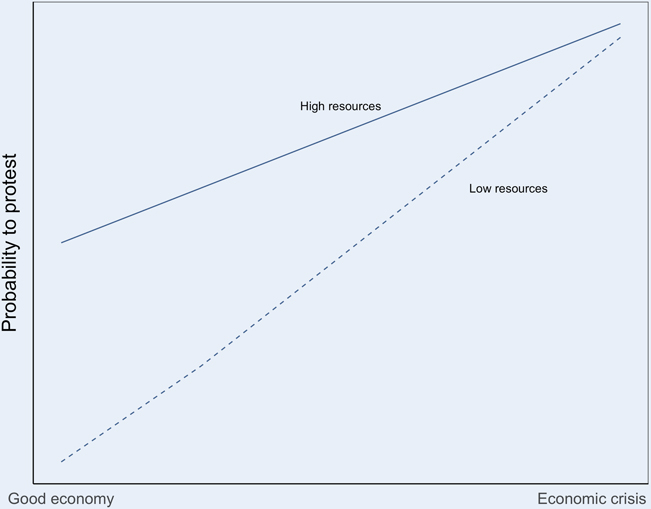
Figure 1 Likelihood of Engaging in Political Participation as a Function of the Economic Situation among Individuals with High and Low Resources
If this expectation is accurate, protesting will vary as a function of an aggregate-level indicator, such as the economic crisis. In this sense, the need to consider the conditional effect of aggregate trends in our understanding of protesting recently offered interesting insights. For instance, Kern, Marien, and Hooghe (2015) showed that noninstitutionalized political participation increases in bad economic times, during which individual factors (e.g., satisfaction with the economy) become more relevant. Solt (Reference Solt2015) found that economic inequality triggers heterogeneous effects: only those with incomes below the top quintile experience a decrease in protest participation. Similarly, Grasso and Giugni (Reference Grasso and Giugni2016) showed that individual-level perceived relative deprivation had a direct effect on the propensity to protest in the past year and that this effect is greater under certain macroeconomic and political conditions. Finally, Torcal, Rodon, and Hierro (2016) provided evidence that left-wing individuals are still more likely to protest, even when the cabinet is held by a leftist party or coalition.
In summary, our hypothesis is that the effect of socioeconomic factors (i.e., gender, age, income, education, and ideology) will interact with an aggregate-level variable such as the state of a country’s economy such that the effect of these typically constraining participating factors will be reduced or eliminated.
H 1 : The economic crisis diminished or eliminated the protest gap shaped by traditional socioeconomic and ideological positions.
DATA AND METHODS
We relied on data from the European Social Survey from the years 2006, 2008, 2010, 2012, 2014, a biannual survey conducted in several European countries. Data cover the period of the Great Recession as well as a few years before and after it. We included 25 different countries and more than 128,000 individuals. Following Grasso and Giugni (Reference Grasso and Giugni2016), we complemented individual-level data with the yearly unemployment percentage at the country level, as reported by Eurostat. Footnote 2 Although unemployment may reflect differences in European labor markets, it is an appropriate indicator to address general economic circumstances (Lewis-Beck and Mitchell Reference Lewis-Beck and Mitchell1990). Furthermore, during the Great Recession, unemployment greatly affected the lower strata of European societies (Grusky, Western, and Wimer Reference Grusky, Western, Wimer, Grusky, Western and Wimer2011), providing a convenient test of whether low-resources individuals increase their probability to protest. Because the data structure is hierarchical (i.e., individuals are nested within countries), we performed a multilevel linear-probability model (Caudill Reference Caudill1988). Appendix table A1 shows the number of observations by country and year used in the baseline model (“participation in a demonstration” is the dependent variable).
The European Social Survey contains several items of political participation. We distinguished between protest activities in which individuals assume a low cost from those that entail a (relatively) high cost. We considered that participating in a demonstration is a much costlier activity than signing a petition or engaging in a boycott. Demonstrating entails an investment in terms of time, information, public exposure, and opportunity costs, whereas signing petitions and boycotting are more likely to be undertaken in an individual’s private sphere, with relatively lower associated costs. Along these lines, a principal-component analysis showed that taking part in demonstrations represents a different dimension than signing petitions or boycotting, two activities that are strongly associated within the same dimension. Footnote 3 Thus, we first focused our attention on whether the respondent took part in a lawful demonstration during the previous 12 months (1) or did not (0). Second, we used whether the respondent participated in a boycott for political reasons or signed a petition (1) or did not participate in any of these activities (0).
The empirical analysis included several sociostructural indicators. To ease the interpretation, the reference category in all cases is the socioeconomic or ideological group expected to participate less. First, we included political ideology, a categorical measure ranging from 1 to 5 (from extreme left to extreme right, this latter being the the reference category). Second was gender (0 women, the reference category; and 1 men). Third was age, recorded in four categories: 15 to 29 years; 30 to 44 years; 45 to 64 years; and 65 and older (the reference category). Fourth, we included an individual household’s total income (after tax and compulsory deductions), which we divided into three categories from low income (the reference category) to high income. The fifth individual-level covariate was the level of education, a dichotomous variable with 0 corresponding to lower education (to completion of secondary education, the reference category) and 1 corresponding to medium and high education. Sixth, we included the individual-level controls of political interest (which ranged from 1 = no interest at all, to 4 = very interested) and whether the individual felt close to a political party (1) or not (0).
Our models were based on a series of multilevel linear-probability models with random effects at the country level. Footnote 4 We first ran a baseline model with no interaction terms to assess the likelihood of different individuals to engage in protesting activities, as specified by the following model 1 equation. All models included year-fixed effects to account for a country’s initial value in unemployment and to control for plausible time trends.
 $$\eqalign{ & {\rm{Model\ 1:\ }} \cr & Y_{pol.participation} = \alpha \,|\,\beta _1 Ideology\,|\,\beta _2 Gender\,\,|\,\,\beta _3 Age\,|\,\beta _4 Income\,|\,\beta _5 Education\,|\,\beta _6 Political interest\,|\,\beta _7 Party \,closeness\,|\,\beta _8 Unemployment\,|\,\beta _9 Year\,|\,\varepsilon \cr} $$
$$\eqalign{ & {\rm{Model\ 1:\ }} \cr & Y_{pol.participation} = \alpha \,|\,\beta _1 Ideology\,|\,\beta _2 Gender\,\,|\,\,\beta _3 Age\,|\,\beta _4 Income\,|\,\beta _5 Education\,|\,\beta _6 Political interest\,|\,\beta _7 Party \,closeness\,|\,\beta _8 Unemployment\,|\,\beta _9 Year\,|\,\varepsilon \cr} $$
In the second step, the impact of unemployment level on the likelihood of engaging in protesting was tested through a cross-level interaction between the aggregate-level measure of unemployment and our main independent variables.
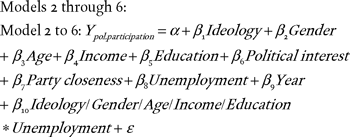 $$\eqalign{ & {\rm{Models\ 2\ through\ 6:\ }} \cr & {\rm{Model\ 2\ to\ 6:}}Y_{pol.participation} = \alpha + \beta _1 Ideology + \beta _2 Gender + \beta _3 Age + \beta _4 Income + \cr & \beta _5 Education + \beta _6 Political \,interest + \beta _7 Party \,closeness + \beta _8 Unemployment + \beta _9 Year + \cr & \beta _{10} Ideology/Gender/Age/Income/Education*Unemployment + \varepsilon \cr}$$
$$\eqalign{ & {\rm{Models\ 2\ through\ 6:\ }} \cr & {\rm{Model\ 2\ to\ 6:}}Y_{pol.participation} = \alpha + \beta _1 Ideology + \beta _2 Gender + \beta _3 Age + \beta _4 Income + \cr & \beta _5 Education + \beta _6 Political \,interest + \beta _7 Party \,closeness + \beta _8 Unemployment + \beta _9 Year + \cr & \beta _{10} Ideology/Gender/Age/Income/Education*Unemployment + \varepsilon \cr}$$
RESULTS
Our baseline models first analyzed the impact of sociostructural factors on the probability of participating in a demonstration (i.e., high-cost protest) or engaging in boycotts and signing petitions (i.e., low-cost protests).
Figure 2 plots the likelihood of demonstrating across the different sociostructural indicators. The top-left graph shows that demonstrating is much more likely among extreme-left and left-wing individuals than others. As one moves to the right of the ideological spectrum, the graph shows that the relationship between demonstrating and ideological self-placement flattens out. It is interesting that the “gender” and “income” variables do not report statistically significant differences across the different values. This effectively means that men are equally as likely to attend a demonstration as women and that low-income individuals are equally as likely to demonstrate as middle- and high-income respondents. Conversely, the results show that young people are 2.6 times more likely to attend a demonstration than older people. Finally, individuals with medium and high education are 1.7 percentage points more likely to attend a demonstration. Overall, these baseline models show that sociostructural factors generate a protest gap; however, the effect is not constant (or even significant) across variables, as illustrated in the cases of gender and income.

Figure 2 Likelihood of Participating in a Demonstration in 26 Countries, 2006–2014
Conversely, when considering low-cost protesting—that is, boycotting and signing a petition—the protest gap exists across all categories (as shown in figure 3). The relationships between ideology and protesting and between age and protesting show a similar trend than in figure 2: extreme left-wing individuals and younger citizens are more likely to protest than extreme-right individuals and older citizens. The only subtle difference concerns low-cost protesting and middle-aged individuals. As opposed to high-cost protesting, the middle-aged group is equally as likely to protest as younger people. Additionally, higher- and medium-educated individuals engage to a greater extent in low-cost protesting than low-educated individuals. Again, these baseline models reveal a consistent and significant protest gap. Moreover, when compared to participating in demonstrations, income and gender are significant. High-income individuals are more likely to participate than medium- and low-income individuals in low-cost protesting. Moreover, women are significantly more likely to participate in low-cost activities than men.
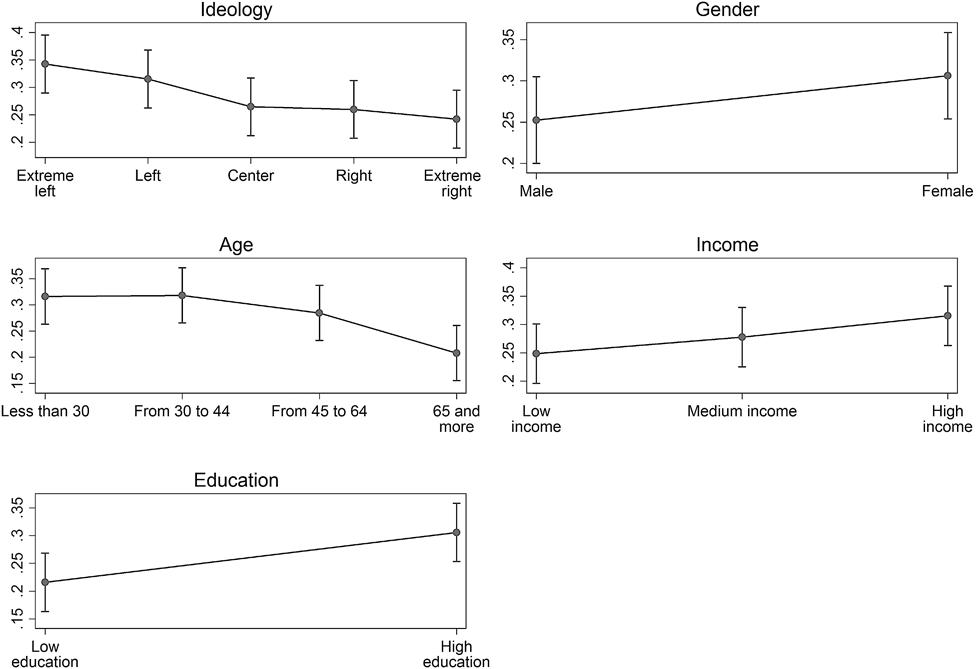
Figure 3 Likelihood of Engaging in Low-Cost Participation in 26 Countries, 2006–2014
Next, we assessed whether the protest gap across sociostructural groups closes, widens, or remains stable as a function of the state of the economy. To do so, we ran several models in which we included an interaction between each sociostructural indicator and a country’s level of unemployment.
Figure 4 summarizes the change in likelihood of engaging in each form of participation across the different variables when moving from a country with minimum to maximum levels of unemployment. Positive values indicate that changing the level of a country’s unemployment from the minimum to the maximum value has a positive effect on the likelihood of protesting. Negative values indicate otherwise. Review of the graph reveals a scenario consistent with previous works: almost all coefficients are positive, meaning that during bad economic times, the likelihood to protest increases. If hypothesis H1 on the reduction of the protest gap is correct, we should observe for each variable that the coefficient in the reference category (i.e., the group that participates less, indicated by an asterisk) is higher than the coefficients of other categories—that is, the protest gap diminishes if the increase in the reference-category group is greater than the increase in the remaining groups.
...our baseline models first showed that extreme-left and left-wing individuals, young people, and those with medium and high education are more likely to take part in demonstrations than others, although no differences are evident across gender and income groups. A different pattern emerged when analyzing participation in low-cost protesting activities.
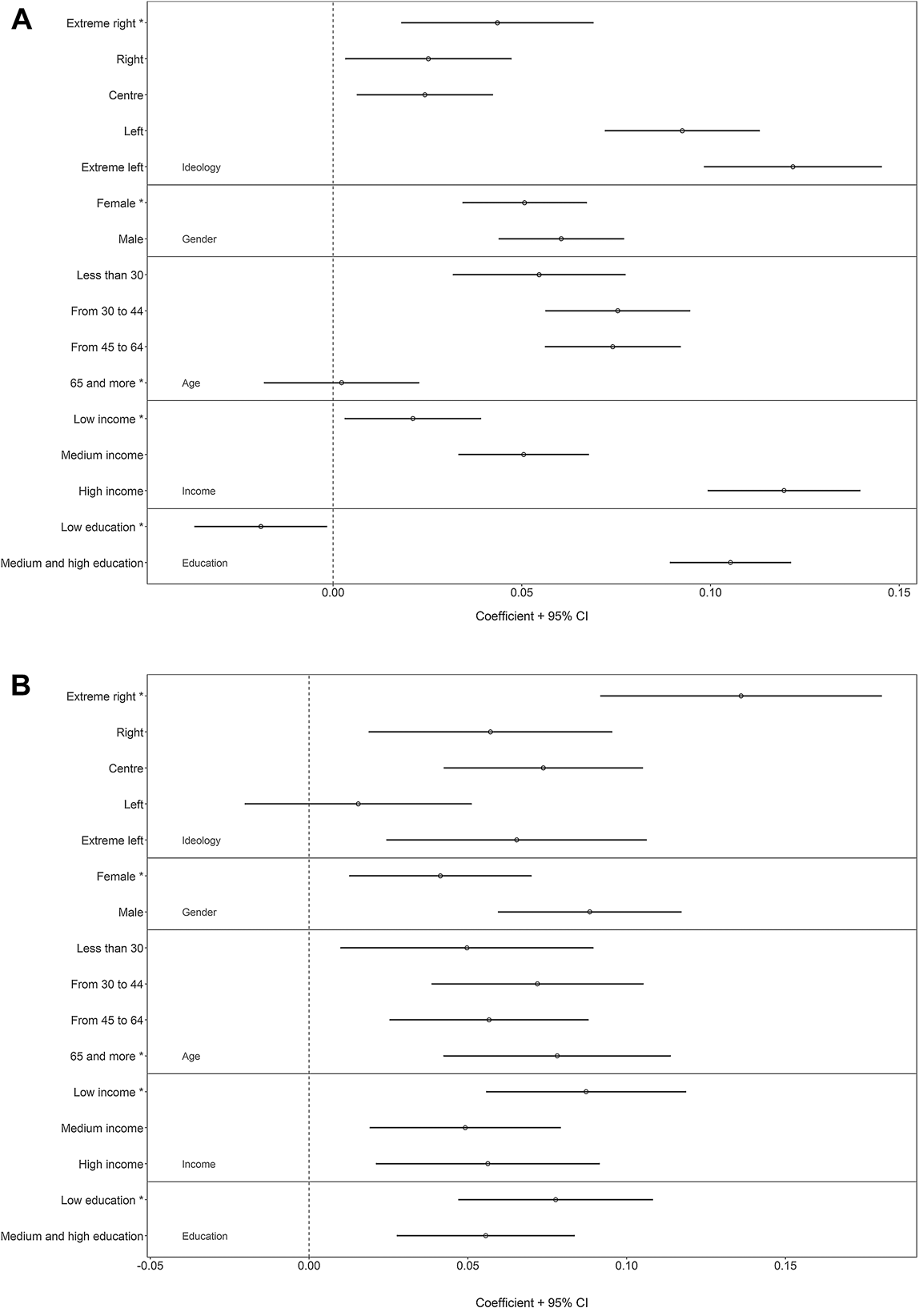
Figure 4 Change in the Likelihood of Engaging in High and Low-Cost Protesting When Moving from a Country with Minimum to Maximum Level of Unemployment
We first focused on high-cost protesting. Recall that the baseline models showed that for high-cost protesting, a protest gap existed in ideology, age, and education with no significant differences across the categories in income and gender.
In a bad economic situation, the coefficients in figure 4(a) reveal that the ideology, age, income, and education gaps increase. (Note that the coefficients for the reference category are lower than the others.) The likelihood of participating in demonstrations increases for all ideological groups during bad economic circumstances, although extreme-left and left-wing individuals are the ones that experience a larger increase in the likelihood to protest. Differences between the coefficients from extreme-right, right and centrist individuals are not statistically significant among them. In what concerns age, a similar pattern arises: when the economy is bad, all age groups are more likely to attend high-cost protesting events, except those who are 65 and older. Likewise, during bad economic times, low-income individuals experience only a small increase in the probability to attend demonstrations, while medium- and particularly high-income groups are more likely to go to the street. Finally, under bad economic circumstances, individuals with medium and high education are significantly more likely to attend demonstrations, whereas the likelihood to protest among low-education individuals slightly diminishes. In summary, when the economy falters, the analysis shows that the protest gap increases (except for gender).
Interestingly, results shown in figure 4(b) for low-cost protesting reveal differences. The baseline models shown in figure 3 indicated that the protest gap was present for all socioeconomic factors. However, when the level of unemployment increases, a different pattern emerges. First, when unemployment is high, the likelihood of extreme right-wing individuals to engage in low-cost protest events increases considerably, eliminating the former gap found in good economic times (see appendix figure A6). Second, when the economy is doing poorly, the increase in the likelihood of men engaging in low-cost protesting is higher than the women’s increase, eliminating the initial protest gap reported in favor of women during good economic times (see appendix figure A7). Third, the income categories show that the increase in the likelihood of low-cost participation is higher among low-income individuals, closing the protest gap found during good economic times.
Conversely, the protest gap persists when we examine age and education. Estimates show that bad economic circumstances increase the likelihood of all age and education categories engaging in low-cost protesting.
Table 1 summarizes whether the protest gap closed as a consequence of the Great Recession. Considering the state of the economy, measured by the level of unemployment, it is evident that, in general, a poor economic context increased the likelihood of individuals engaging in both high- and low-cost political participation (i.e., the “Trend” column). The different interactions (summarized in the “Protest Gap” column) showed that at high levels of unemployment, the protest gap increased for high-cost protesting. In contrast, the protest gap remained stable or diminished relative to low-cost protesting. Although the probability to protest among extreme-right, low-income, and male individuals during good economic times was much lower than their counterparts, this probability converges when the economy performs inadequately. The protest gap, however, remains stable when we examine the age and education variables: the economic crisis simply increased everyone’s probability to protest, thereby keeping the gap constant. Footnote 5
Table 1 The Effect of Socio-Structural Factors and Ideology at High Levels of Unemployment. Summary of the Empirical Findings.
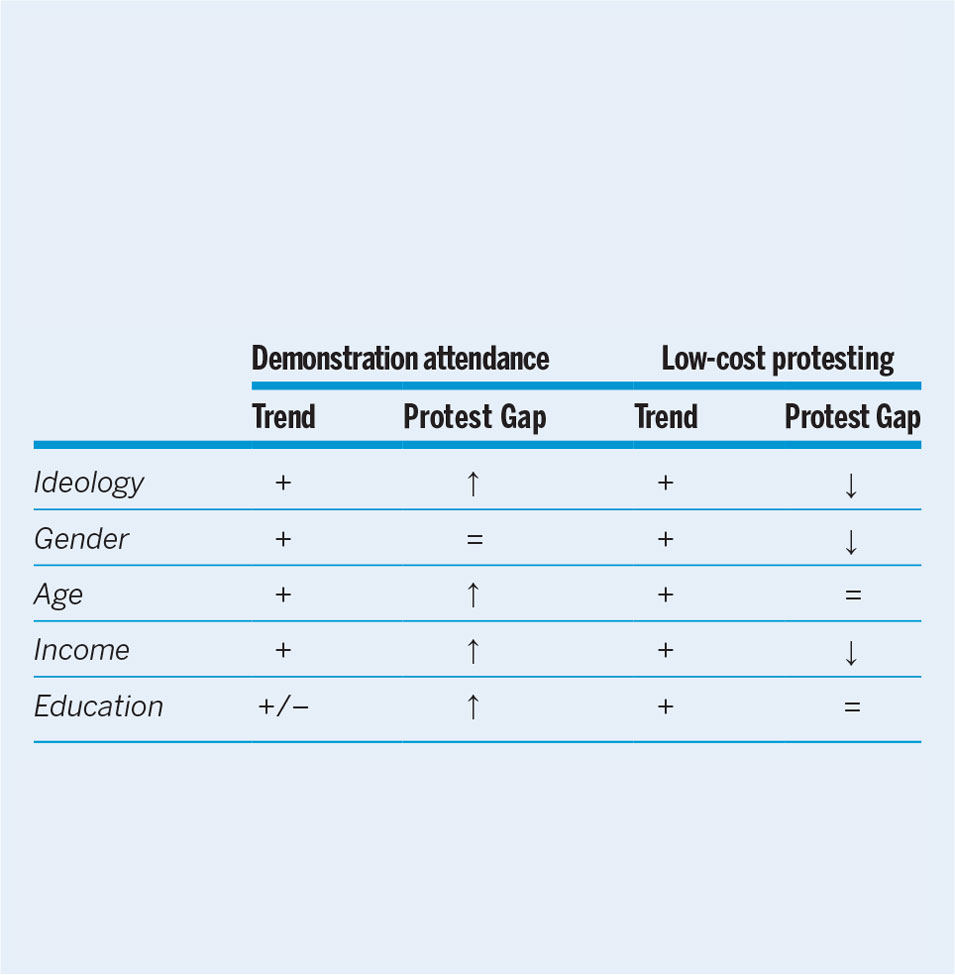
Notes: Table summarizes the effect of socio-structural factors when the level of unemployment is high. The positive (negative) sign indicates that groups are more (less) likely to protest when the economy reports bad figures.
Arrows and equal sign show whether the protest gap (the difference in the likelihood of protesting across social groups) increases, decreases or remains stable.
DISCUSSION
This article analyzes whether bad economic circumstances can close the protest gap. Existent research has shown that sociostructural factors such as income, ideology, and gender explain differences in the probability of participating in demonstrations and engaging in other protest activities. Using longitudinal data from 26 European countries coming from the ESS, our baseline models first showed that extreme-left and left-wing individuals, young people, and those with medium and high education are more likely to take part in demonstrations than others, whereas no differences are evident across gender and income groups. A different pattern emerged when analyzing participation in low-cost protesting activities. Left-wing and young individuals are more likely to engage in boycotting or petition signing as are female, high-income, and better-educated individuals. This divergent pattern confirmed the appropriateness of distinguishing between low-cost and high-cost modes of protesting.
We next assessed whether the sociostructural gap in protest behavior changed as a function of economic circumstances. Concerning high-cost protesting, our findings showed that during bad economic times, extreme-left and left-wing citizens are still more likely to attend demonstrations than the rest of the population, thus widening the pre-existent gap. The gap also increases among individuals with higher income or higher education levels, as do young and middle-aged individuals.
In contrast to demonstration attendance, the effect of unemployment on the probability of engaging in low-cost protesting is fairly heterogeneous. When unemployment is high, all groups are more likely to protest; however, the gap diminishes in three of the five sociostructural indicators used in the analysis. First, the change in the likelihood to protest is higher among men than women (who were initially more likely to protest). Second, extreme right-wing individuals increase to a greater extent their likelihood of engaging in low-cost participation during bad economic times than the remaining ideological groups. Third, low-income individuals increase their likelihood of participating when compared to medium- and high-income groups.
To summarize, our empirical analysis shows that when considering costly activities such as demonstration attendance, the protest gap defined by sociostructural factors widens. In contrast, the protest gap in low-cost protesting either remains stable or closes. The first part of our findings agree with Grasso and Giugni’s (2016) article showing that unemployment increases the effect of subjective relative deprivation. By using several sociostructural indicators, less affected by endogeneity issues, we confirmed their findings; however, we also showed that considering the type of protest is important. During bad economic times, the protest gap in low-cost protest activities is, in fact, lower or even negligible. In other words, when the economy is bad, sociostructural factors still matter in making certain individuals less likely to voice their discontent. However, this effect depends crucially on the type of protest.
Our findings invite further research in understanding the compositional change in protesters as a result of economic circumstances. Similarly, the need remains to understand how macroeconomic magnitudes may influence the likelihood of certain individuals engaging with new forms of participation, such as social-media activism and protest fundraising events. More generally, the protest gap encourages us to think about how the preferences of those less likely to protest are communicated to the governing institutions.
SUPPLEMENTARY MATERIAL
To view supplementary material for this article, please visit https://doi.org/10.1017/S1049096517001809







